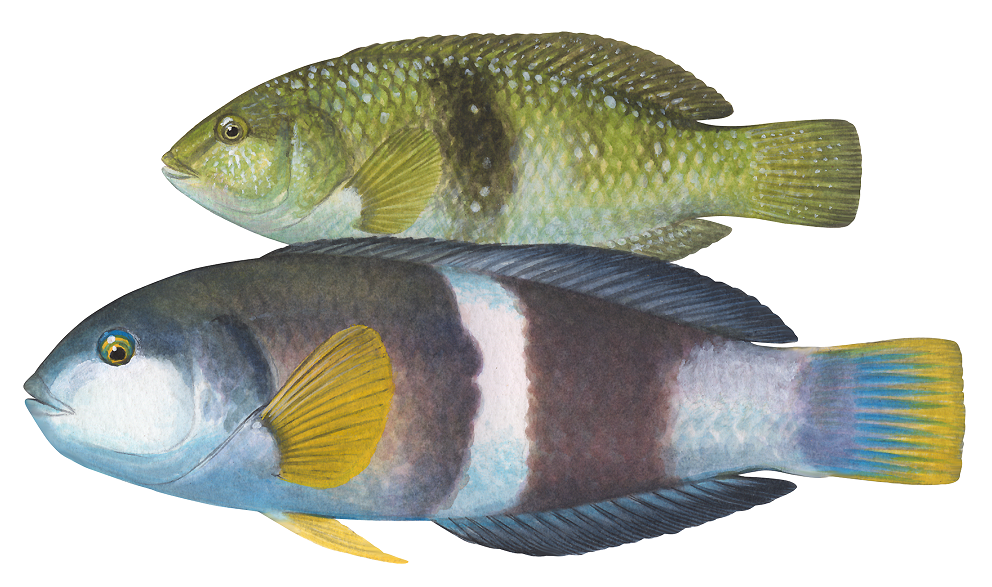Bluethroat Wrasse
pinungana (Fish)
In palawa kani, the language of Tasmanian Aborigines, with thanks to the Tasmanian Aboriginal Centre.
Notolabrus tetricus (Bluethroat Wrasse)

2022/23 Bluethroat Wrasse Status (Released August 24)
| Stock Status | SUSTAINABLE | ||
| Summary | For nearly a decade, catches, effort, and CPUE of Bluethroat Wrasse have shown stability, indicating that current fishing pressure is likely sustainable. Uncertainty remains over levels of potential localized depletion, and about the size of the catch taken by rock lobster fishers for use as bait. Relatively low catches over the previous three seasons have likely been caused by a combination of COVID impacts and changes in fishery dynamics, though the most recent season has shown an increase in catch. | ||
| Importance | Key | ||
| Stock | Tasmanian Scalefish Fishery | ||
| Indicator(s) | Catch, effort and CPUE trends | ||
| Managing Jurisdiction | State (Tasmania) | ||
Background
Two species of Wrasse are taken commercially in Tasmanian waters: Notolabrus tetricus (Bluethroat Wrasse) and Notolabrus fucicola (Purple Wrasse). The two species have only been distinguished in catch data since 2007, despite their different size, depth, and tendency to be captured by different gear. Both species are protogynous hermaphrodites, with all individuals beginning life as females and some undergoing a sex inversion after maturity. Both Wrasse are reef-associated and are targeted primarily using fish traps (mainly Purple Wrasse) and handline (mainly Bluethroat Wrasse). Live fish trade is the main interstate market for Wrasse, while the local market comprises dead Wrasse for rock lobster bait and some human consumption. The live-fish fishery has accounted for > 90% of total reported catches since 2001/02 and there is no significant recreational fishery for these species.
The latest full Scalefish Assessment can be found at the link:




Social and Economic Indicators